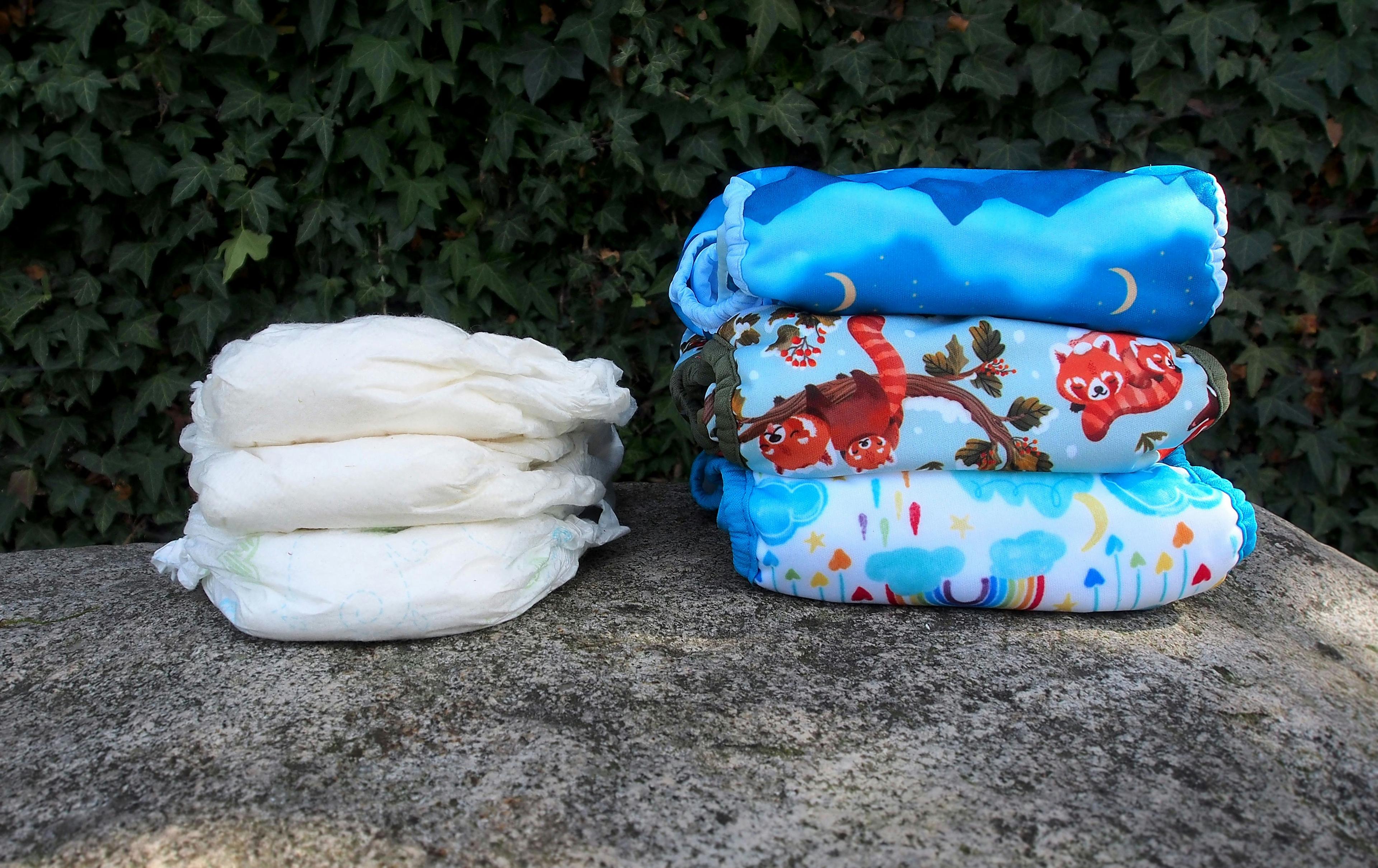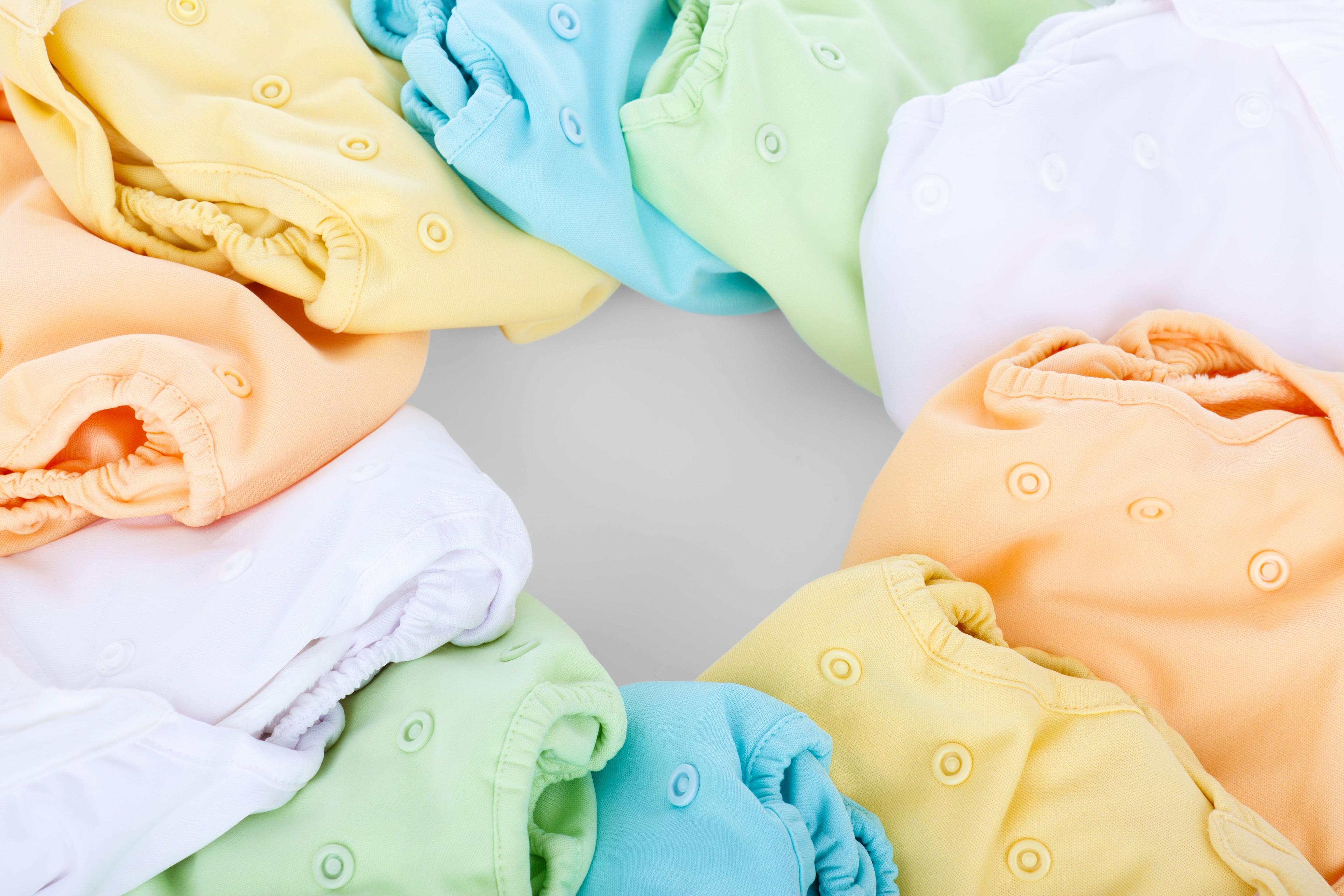My cloth diaper wash routine

The fact that cloth diapers are more affordable and better for the earth is not controversial. But the hindrance for so many people is convenience; cloth diapers seem like a lot of work. However, cleaning and caring for cloth diapers doesn’t have to be a mystery! I have found the best way to wash cloth diapers for ME. Below are my wash routine and tips to help you create one that works for YOU, your tools, and your baby.
I love cloth diapering and don’t find the work hard to keep up with at all. It definitely took an upfront investment, not only in diapers but in the time to figure out my wash routine. But after some research and trial & error, we found a good rhythm that fits easily into daily life.
I can’t tell you what the “best” wash routine is because that depends on a lot of factors, like what type of diapers, water, and washer machine you have. But I can help you identify the key questions to ask when developing your own routine so you can figure out how to make it work for you. You won’t look back!
How To Develop Your Cloth Diaper Wash Routine
Key Question #1: How many diapers do you have?
The answer determines your wash frequency.
The fewer diapers you have, the more often you’ll need to wash.
I have about 36 diapers, which last about three and a half to four days (depending on the age of the baby). I wash every other day, knowing there’s some buffer if I get busy or forget to do a load.
However, even if you have more than enough diapers, the longest you want your dirty diapers to sit is 3 days, as after that, they can start to mildew and stain.

Key Question #2: What kind of water do you have?
The answer determines what kind of detergent will work best and whether or not you need an extra rinse cycle either before or after the main wash.
You need to know whether or not you have hard water. Putting your zip code into this map can give you a clue, but testing the water in your washer is the best way to know for sure.
Higher levels of minerals in your water (aka higher “hardness”) require detergent to attack the mineral buildup and distract it from the dirt and stains on your diapers, decreasing the quality of your clean. Also, if minerals are not properly removed, they can leave a deposit on your diapers, which decreases absorbency.
If you have hard water, add a water softener so that the cleaning components in the main detergent can focus on the dirt and stains rather than having to fight hard water minerals. I use Arm & Hammer Washing Soda, which is effective and non-toxic.
If you have hard water, avoid an extra rinse cycle at the end, as water without detergent gives the minerals more opportunity to build up on your fabric. If you have soft water, you likely will need an extra rinse to wash away detergent residue.
Key Question #3: What kind of washer do you have?
This determines your water level and whether or not to add a rinse cycle.
There are three main types of washing machines: traditional top loader, front loader, and high efficiency (HE) top loader.
All three can do the job perfectly well, but they have different options that affect your routine.
Traditional top loaders: you have control over your water level (unlike with an HE machines), and water level matters. It’s like Goldilocks: there can’t be too much or too little, the water needs to be just right so that the diapers can get the right amount of agitation.
Match your chosen water level to the size of your load, and don’t fall for the common misconception that the more water there is, the cleaner the diapers will be.
Front-loaders & HE machines: these are great for saving water and electricity, but chances are they’ll want to use less water than your diapers need. For front loaders, add an extra rinse cycle. For HE machines, you’ll need to trick the machine into using more water by adding weight, perhaps by throwing a wet towel or a pair of jeans into the load.

My Wash Routine
I wash my diapers every other day. I have a traditional top loader machine and hard water.
Scrape the solids: Before my diapers even hit the pail, I clean (the poopy ones) using this toilet shield and sprayer. The hardest part about cloth diapering is the poops, and these tools make it so much easier!
Pre-rinse: I start by running a cold rinse cycle to remove the urine buildup from the inserts. I do not add soap or a water softener here.
Wash Cycle: I run a regular warm cycle with my favorite non-toxic detergent and about 1/8th of a cup of Arm & Hammer Washing Soda.
If my diapers have been sitting longer or feel a little extra stinky, I’ll run a “heavy soil” wash instead of regular. Every once in a while, if I’m running into absorbency issues, I’ll run the load on “hot” instead of warm.
Extra Rinse: I don’t include an extra rinse in my routine as my water is hard, and that leads to buildup for me!
Dry Cycle: I do a 90-minute dry cycle LOW, which preserves the elasticity and quality of the materials. Yes, it takes forever! But it’s worth it to me to preserve the life of my diapers.
I use dryer balls but no other added sheets or softeners (because those are toxic!), which works perfectly.
Stuff & Restock: which often includes playing the “laundry game,” aka throwing handfuls of diapers on my toddler’s head.
I always smell them when they come out of the dryer and will re-wash them if they carry an off-odor (which hardly ever happens).
Goodluck!
There you have it. Best of luck as you develop a wash routine that works great for YOU.
FAQ Test
Question 1
Question 2
Related articles

Top healthy & clean protein powder (best brands!)
Not all protein powders are healthy. Many contain fillers, sweeteners, and even heavy metals. In this article, I break down the best healthy and clean...

Is your tap water toxic? How to chose the best water filters
Find the best water filters to remove PFAS, microplastics, lead, and more. Is your tap water really safe? Just because tap water meets legal standards...

Natural cleaning products 101: What to buy, what to avoid, and why it matters
Switching to natural cleaning products doesn’t mean sacrificing effectiveness. In this article, I share the best non-toxic and natural cleaners (like Branch Basics, Blueland, and...


